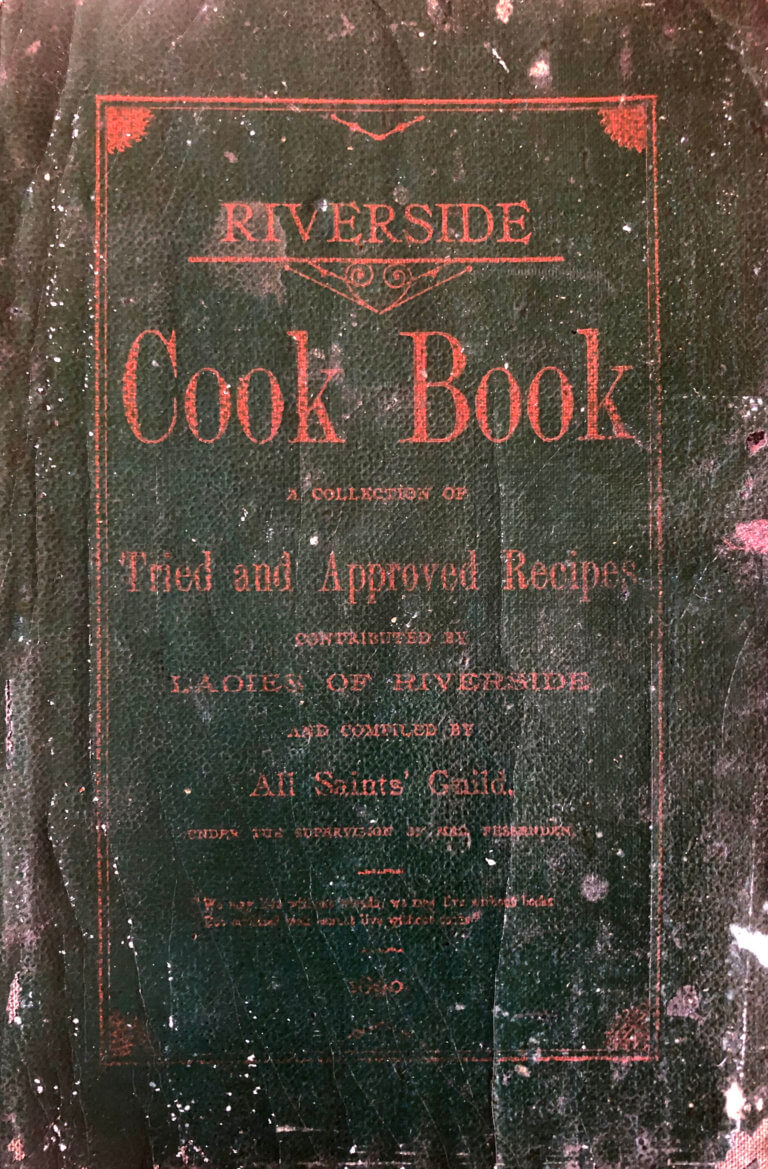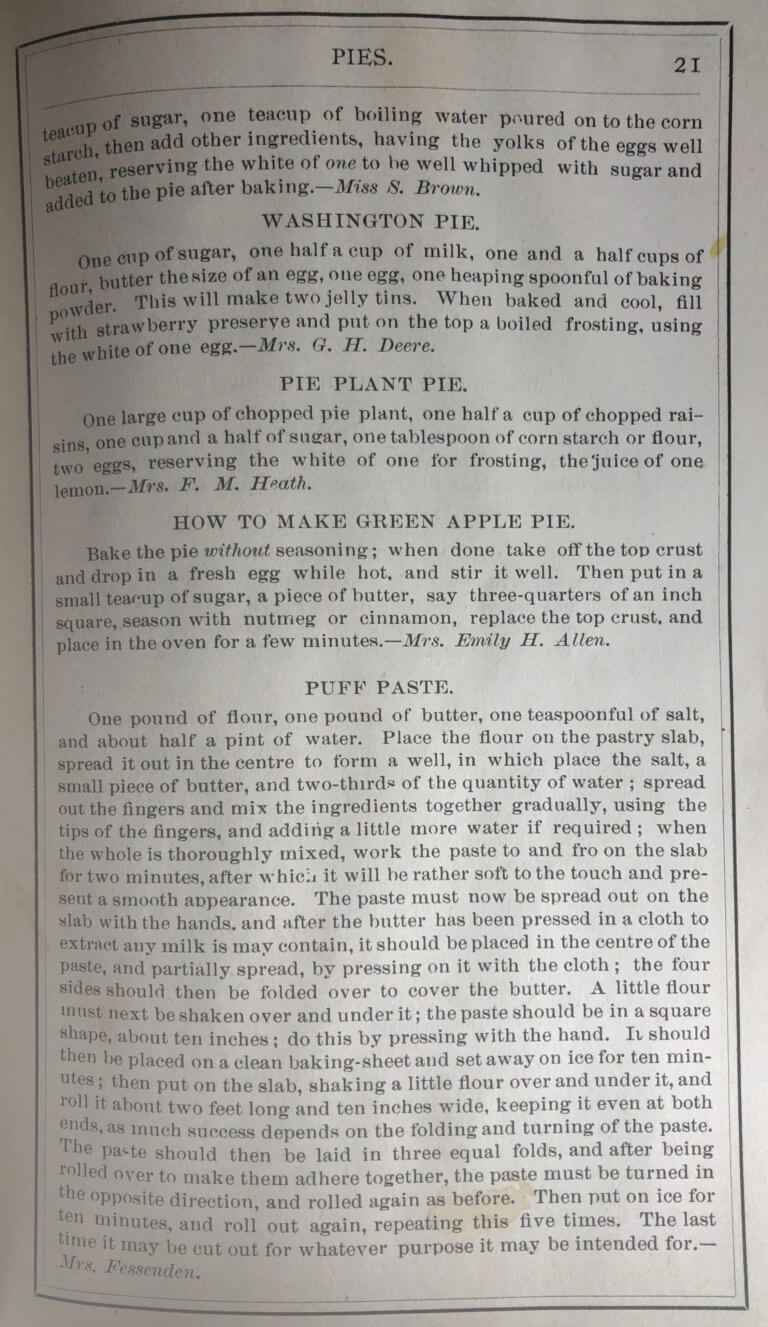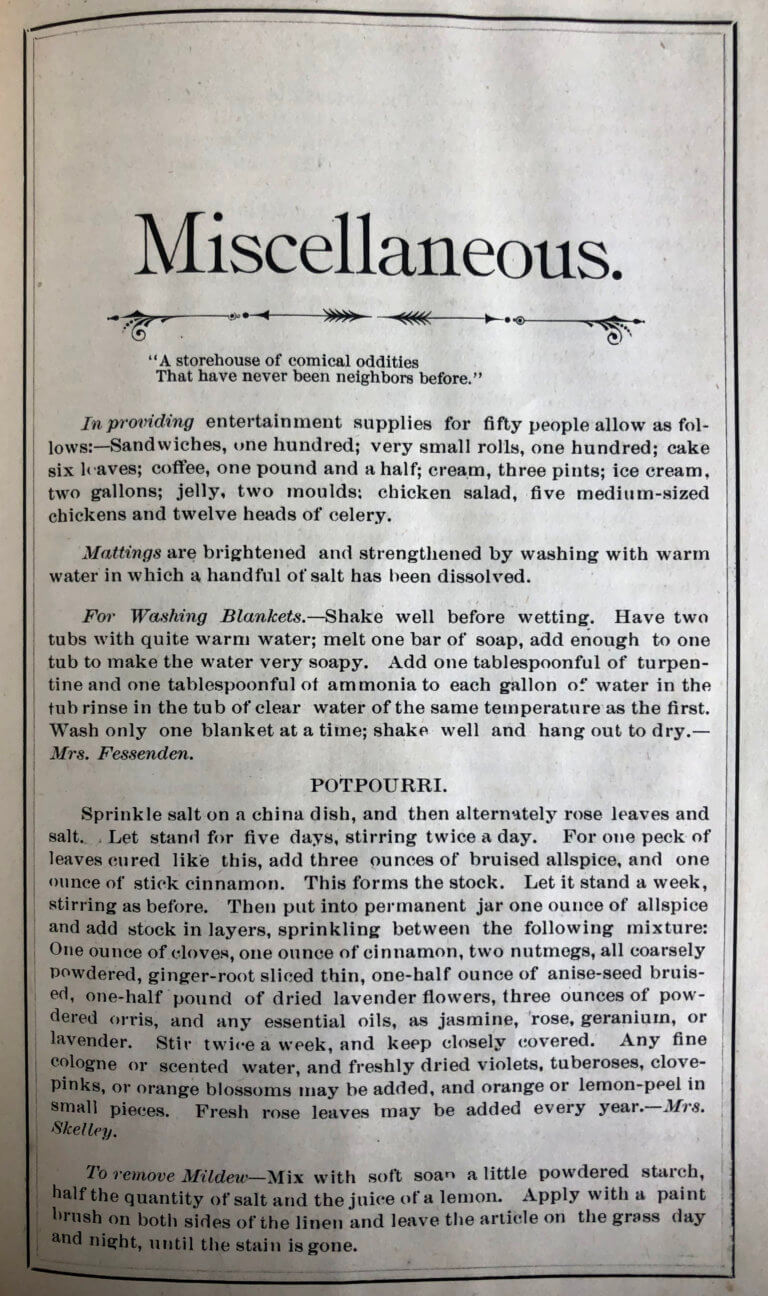Have You Ever Eaten Pie Plant Pie?

Jill Thrasher, Librarian
With the “stay-at-home” orders in place, many families find themselves cooking more than usual. To help you in your cooking, Sherman Library is sharing recipes from the 1890 Riverside Cook Book. The All Saints’ Guild of Riverside compiled this cookbook, under the supervision of Mrs. Fessenden. The “Ladies of Riverside” contributed their “Tried and Approved Recipes.” The recipes were all “family favorites [that] borne the test of time and experience.”
Here are a few recipes that you might like to try — or not? Note that none of the recipes mention oven temperature. During that era most early stoves were heated by wood or coal, thus cooks depended on their own instincts for baking and cooking.
The following is a sampling of recipes from the book. If any of them tempt you into the kitchen, please send your story to Sherman Library. Happy cooking!
Pie Plant Pie
One large cup of chopped pie plant, one half a cup of chopped raisins, one cup and a half of sugar, one tablespoon of cornstarch or flour, two eggs, reserving the white of one for frosting, the juice of one lemon.
Note: This is what we know as Rhubarb Pie. Rhubarb was introduced from Europe, by a Maine gardener, in the late 1700s. Within 25 years, it had become so popular that it was a regular offering at produce markets. In its early years, rhubarb was primarily used for pies, earning it the nickname “Pie Plant.”
White Soup
Requires a knuckle of veal, four quarts of water, a little celery seed, two onions, two turnips. Boil down to two quarts, strain the liquor and let stand until it is cool, when all fat must be removed. Add one pint of new milk, the beaten yolks of three eggs, and a little vermicelli. Let it come to a boil and it is ready to serve.
Note: The knuckle is the lower part of a leg of veal, from the line of the body to the knuckle.
Little Pigs in Blankets
Season large oysters with salt and pepper, cut nice, fat bacon in very thin slices, wrap an oyster in each slice and fasten with a little wooden skewer. Heat a frying pan and put in the “little pigs.” Cook just long enough to crisp the bacon, about two minutes, place on small slices of toast, garnish with parsley and serve immediately.
Note: These Pigs in a Blanket are a far cry from the ones we know today.
Swedish Jelly
Take a knuckle of veal (or a chicken) and one onion chopped fine; boil until the meat drops from the bones; chop fine and add the strained juice of the meat, salt, pepper and the grated rind of lemon. Put in a mould and when cold turn out and slice.
Note: This is a type of aspic, which is a savory meat gelatin made from consommé clarified stock, or bone broth.
Cottage Pudding
Two eggs, one cup of sugar, one cup of sweet milk, one pint of flour, one tablespoon of melted butter, two teaspoons of baking powder.
Note: This recipe is short on directions. Not sure if you bake it or steam it?
Boiled Leg of Mutton
Boil well in clear water until tender, seasoning the water with salt; serve with egg sauce, and garnish with parsley, sliced lemons, or sour jelly.
Note: Mutton is meat from a sheep over two years old, and has less tender flesh. In general, the darker the color, the older the animal.




